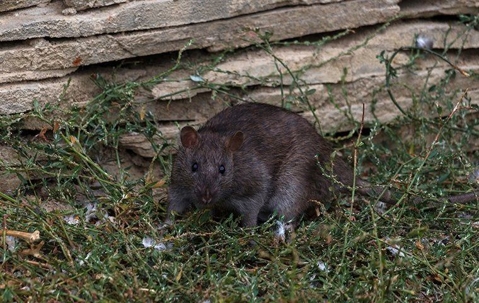Rodents comprise roughly 40% of the mammals that exist in the world today. One commonality shared by rodents is their large front teeth (incisors) that grow continually and motivate these creatures to gnaw on things constantly. Since originally entering the U.S. in the 17th and 18th centuries aboard vessels sailing from Europe, mice and rats today often live in urban and suburban areas, which may allow them easy access to food, water, and shelter.
What is the difference between mice and rats? Mice have much smaller bodies, heads, and feet than rats. Keep in mind that rats and mice do not cohabitate because rats will expel any mice from the structure.
The two primary rat species found on Long Island include Norway rats, commonly called brown or sewer rats, and roof rats sometimes called black rats. Rats struggle with poor vision, which is one of the reasons why these pests commonly remain active during the quieter nighttime hours.
Roof rats have excellent climbing skills that allow them access to upper areas of structures such as rooftops and attics. Norway rats primarily remain on the ground level or below ground in basements or crawlspaces. Both types of rats act as scavengers that eat grains, nuts, fruits, meats, and more.
Have rats infiltrated your home? The best way of responding to intrusions from rats and other potentially dangerous invaders is immediately contacting a Long Island pest control professional. The professionally trained and properly equipped experts understand the best ways how to exterminate rats and how to prevent rats from returning to the premises.
How To Identify A Rat?
The body of a Norway rat appears brown and often reaches ten inches or more with a shorter tail. Norway rats have smaller ears and a somewhat blunt snout. Roof rats have a leaner appearance with black fur and rarely exceed eight inches in length. By comparison, the snout of the roof rat is more pointed.
The Hazards Of A Rat Infestation In Your Home
Rat infestations can result in many problems that often get progressively worse, such as:
- Rats have an excellent sense of smell for detecting any food sources within a home.
- As omnivores, rats will consume most foods as necessary for survival.
- Rats will breed rapidly by producing multiple litters of offspring each year, which means that minor intrusions might quickly develop into full-blown infestations.
- Rats are destructive, as they chew on things in homes such as wiring, cabling, and many other materials.
- During their travels, rats encounter harmful germs and parasites that might pose risks, including leptospirosis, rat-bite fever, tularemia, and other concerns.
Rats create many different problems inside your home, and quickly eradicating them is critical. Rats also pose safety concerns for property owners with pets.
Why It's So Hard To Get Rid Of Rats On Your Own
Many local homeowners often search the internet for information regarding how to repel rats or visit local home improvement stores seeking do-it-yourself pest control solutions. Unfortunately, these usually produce only short-term results and might contain harsh chemical formulas. In the meanwhile, rats remain hidden in hard-to-reach places proliferating and further worsening the scope of the problem. Weeks or months later, many of these individuals experience significant frustration after failing to call in the professionals much earlier.
Call The Pros At The First Sign Of Rats Around Your House
The local specialists with Ultimate Pest Control deliver positive outcomes for property owners on Long Island who find themselves overwhelmed with pests, including rats, mice, and other troublesome rodents. Part of our success involves offering superior customer service and backing the quality of our work with a satisfaction guarantee. Contact our office today for a consultation.

